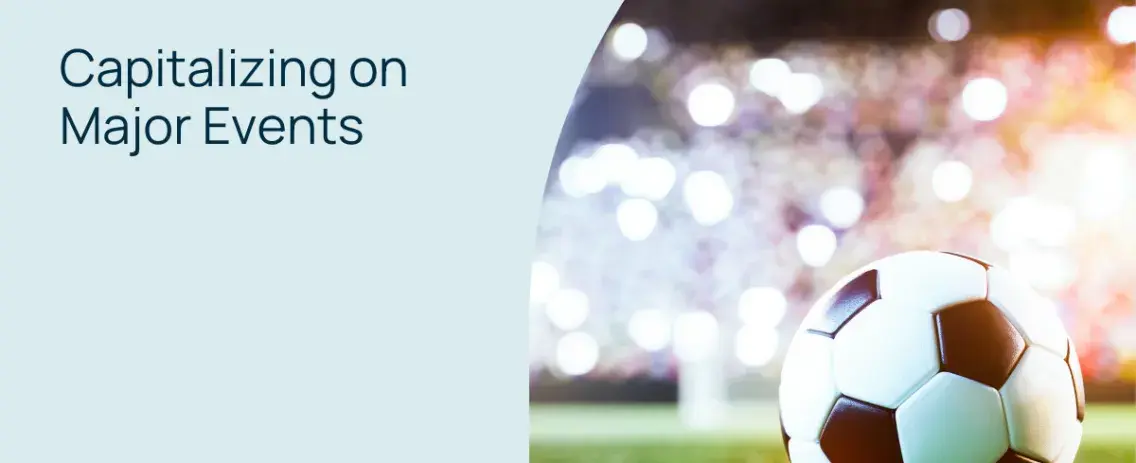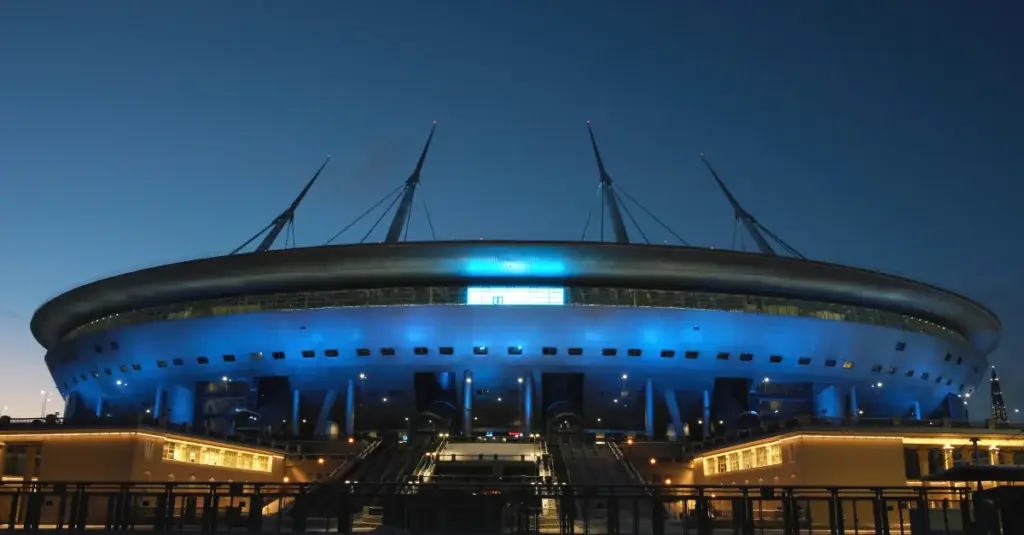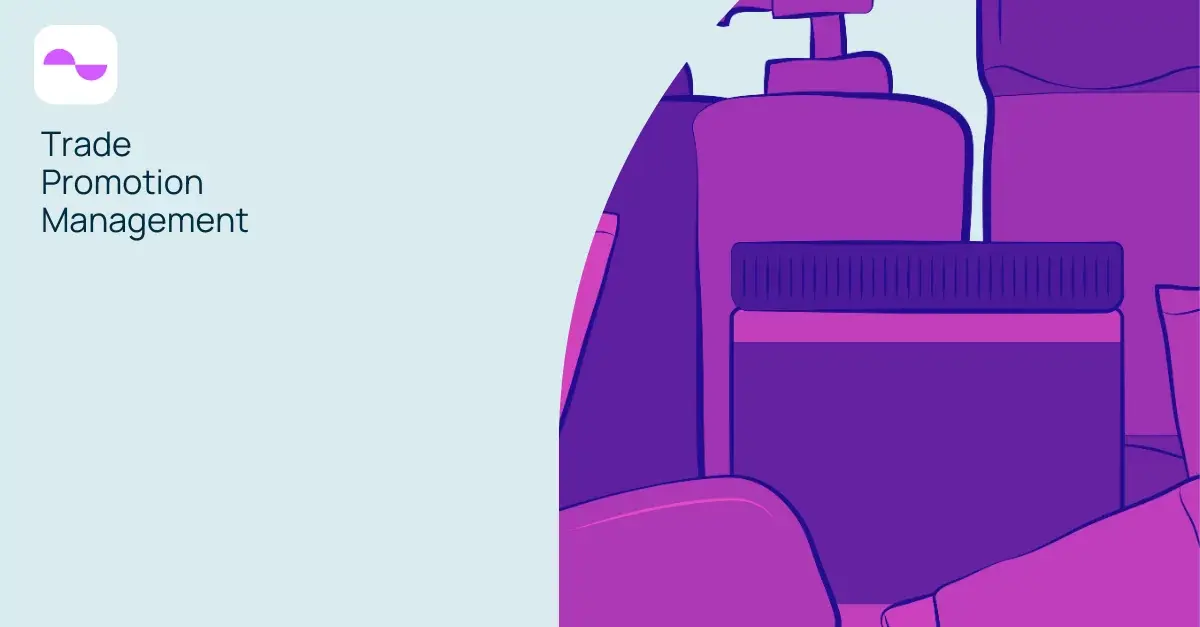
Maximizing CPG product growth in Major Events
Major events, such as international sporting tournaments, can bring together families, communities, and entire populations. And every time large groups of people come together in this way, they will need and want food, drink and other essential supplies.
So it’s clear that major events represent a major opportunity for consumer-packaged goods manufacturers and their retail partners. But just as a sporting team’s tournament campaign will have been planned over months, or even years, so a CPG’s ability to derive the full benefit of a major event requires multiple teams to pull together.
This blog will explore the opportunities major events offer to CPG. As well as the challenges they face in realizing them. It will also show how an integrated approach can overcome those obstacles. Additionally, we’ll discuss how Visualfabriq’s software positions CPG teams to build strategies that will see them through successive major events in winning style.
The influence on CPG sales and brand loyalty
Research by Nielsen has shown that major events have a dramatic impact on CPG sales, particularly around snacks and beverages. The 2018 FIFA World Cup boosted total UK FMCG store sales by 3.8 percent, the firm reported. While the Euro 2020 final boosted drink sales by 33 percent. In the US, sales of salty snacks increased 11 percent in the week of 2023’s Superbowl.
But there are other, less direct effects. Such as positive publicity for sponsors, as well as a general improvement in “consumer mood,” which can give CPG sales a boost. Beyond the short-term impact, by enabling positive experiences, major events can cement brand loyalty, leading to repeat purchases.
Clearly, there is much to play for. But making the most of such opportunities is a complex undertaking.
Christmas is all encompassing, with virtually every CPG manufacturer bidding for part of the piece. But major events are not quite as wide in their impact. Because not everyone is a soccer or American football fan, this means there is not quite as much competition for shelf space in retailers.
But it is essential to have the right selection of products, in the right amounts, and to market them accordingly. Many firms will pursue an umbrella strategy, emphasizing specific products from across their portfolio. For example, alcoholic and soft drinks, pizzas, and BBQ goods. And of course, the salty snacks that go so well with all the above.
For companies that can focus all their relevant product teams, and coordinate the relevant departments – marketing, promotions, forecasting – major events can deliver rewards in both the short and longer-term.
But, just as success is not guaranteed on the pitch, there are major hurdles to CPG companies being able to make the best of the opportunity major events offer.

Understanding the challenges of major events for CPG
On the face of it major events might promise many of the same benefits and challenges as seasonal events such as Christmas. But there are some distinct differences.
The timing of major events is not as predictable as seasonal events. The Olympics and World Cup are held every four years, as are regional championships. But the precise dates are subject to change. Others – such as the Superbowl in the US – are annual.
As well as complicating timings, this can make it even harder to separate out the event’s impact on sales compared to the usual background business. Without the ability to establish reliable baselines, it becomes even harder both to plan and measure the impact of promotions in the future.
Trying to do this with clunky, legacy systems and bespoke spreadsheet-based models compounds the challenge. Simply pulling the historical data needed to produce accurate baselines can be a challenge when this is a manual process.
Moreover, traditional ERP systems can be inflexible. Which makes it difficult to compare product lines that are similar but geared towards different tournaments. Meanwhile, siloed systems make it harder to gain visibility and share data across the different functions necessary for a successful campaign. For example, coordinating marketing and advertising activities with instore promotions.
And if this is difficult with one product line, how much harder is it is when a company wants to pursue an umbrella strategy with multiple related promotions and partners.
Taken together, fragmented data, sub-standard forecasting tools, and a lack of automation and visibility make it difficult to plan promotions to maximize impact during major events. They also make it harder to realize the potential of ongoing benefits after they’ve concluded.

Capitalizing on major events
Knowing a major event can have a dramatic impact on sales of key CPG products is one thing. Being able to forecast and optimize the impact is another.
CPG companies need to move beyond hunches and “this usually works” thinking, and adopt a data-driven approach.
That means siloed systems, that don’t allow data to flow to the right people, need to give way to integrated system. These must be able to smoothly and efficiently harvest the data needed to produce forecasts and plan campaigns. And continue to do so as information changes. Internal data is part of this, with trade promotion, marketing, and demand forecasters all standing to benefit from working on a single version of the truth.
But achieving full visibility means also having access to other data sources, such as market research of syndicated numbers.
Benefits of technology
That is just the start. Modern AI technologies make for more accurate and detailed baselines, and well-founded forecasts. This in turn enables CPG professionals to see the potential impact of different strategies. For instance, in trade promotion or trade spend. From there, it’s just a step to optimizing strategies for maximum impact. Whether the key aim is increasing profit contribution, customer loyalty, or establishing a new brand in the market.
CPGs don’t operate in a vacuum. Finely tuned marketing and trade promotion strategies need to mesh with retailers’ own plans. If they don’t, CPG teams might have to go back to the drawing board. This would delay the finalization of plans – and potentially yield the field to rival CPG players.
But if planners and account managers can plan for multiple scenarios, if negotiations take an unexpected turn, they can quickly offer a retail partner an alternative that meets both their needs.
Once plans are agreed, full visibility across the product range and down through the supply chain means CPG pros can ensure programs are on track – and can be optimized or even altered. For instance, if a particular team goes out early, or the half time show is a letdown. Some things, after all, can’t be predicted.
How Visualfabriq helps
Visualfabriq’s Trade promotion software gives disparate functional and brand teams a single platform with bespoke modules for key functions such as trade promotion management, marketing events, demand forecasting and more.
Data integration becomes smoother and automated, relieving CPG professionals of the drudgery of pulling data manually, and ensuring information is up to date and accurate.
Visualfabriq’s cutting-edge AI and analytics technology enables the creation of accurate historical baselines, and more precise forecasts. Its product lifecycle management module means planners preparing for major events can also perform product switches. Which makes it much easier to compare similar products from one year or one tournament to another.
The high degree of integration between different functions means each team can model the impact of their plans. Additionally, they can assess how they contribute to the success of the company overall. The ability to optimize as you plan, and to create multiple scenarios means CPG account teams can present multiple, well-founded options to their retail partners speeding negotiations and leading to faster decisions.
All of which contributes to a more sustainable, more predictable path to growth from year to year – and from major event to major event.
Takeaways
Major events represent an opportunity for CPG manufacturers to boost sales and gain market share for key product categories in the short term, and to cement brand loyalty in the longer term – if they can deploy the right mix of products and back them up with optimum promotion and marketing activities. This is far easier to achieve with a data-driven approach. Especially if it uses AI to deliver accurate baselines and forecasts, allowing professionals to execute trade promotion optimization as they plan, and explore multiple scenarios.
To find out how Visualfabriq’s software can help you achieve all this, and build a base for sustainable revenue generation management, head here to arrange a demonstration.

.png)

.png)